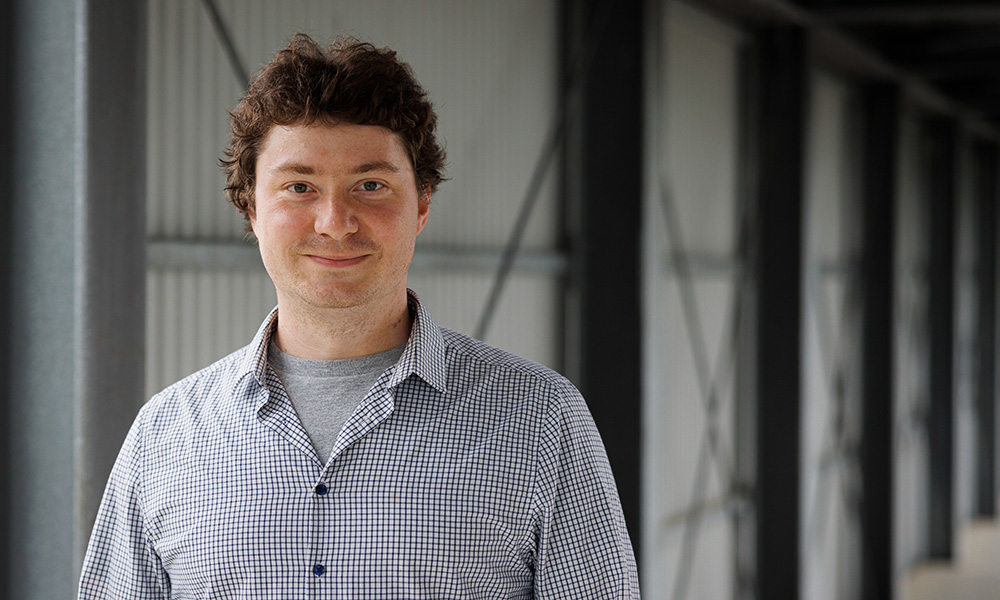
We are EMBL: Jan Bláha on protein crystallisation inside cells
Jan Bláha, postdoc at EMBL Hamburg, talks about the potential of in cellulo protein crystallisation, the power of collaboration, and curiosity

Jan Bláha is a postdoctoral fellow in the Wilmanns Group at EMBL Hamburg, which he joined after his PhD and postdoc in the Czech Republic. In his research, he focuses on developing methods for the crystallisation of proteins within cells. This approach allows him to study protein structures in close proximity to their native environment. Once more broadly established, in cellulo crystallisation could revolutionise drug discovery by simultaneously illuminating how well the drug molecules enter cells and how they bind to their target proteins. Beyond structural biology, in cellulo protein crystals are being developed as innovative bioactive nanomaterials, cellular sensors, drug delivery systems, and agents for streamlining the purification of therapeutic antibodies.
Here, Bláha talks about the utility of in cellulo protein crystallisation in structural biology research and the values of collaboration, curiosity, and resilience.
How do you see your work evolving over the next few years?
In cellulo protein crystallisation is a specialised technique that, in my view, hasn’t yet received the recognition it deserves within the structural biology field. I believe its practical applications are set to expand significantly in the near future. This method’s utility spans from traditional structural biology roles to innovative uses like screening for small molecules that can enter cells, creating sensors for various cellular activities, and developing nano-materials for biotechnology and drug delivery. Presently, only a few dedicated groups are exploring the potential of in cellulo crystallisation.
How important do you think collaboration is to achieving your goals?
Collaborating across various scientific disciplines is crucial, not just for the success of my project, but for the advancement of most projects in the life sciences that are extending the limits of our creativity and comprehension. Just as my countryman Antonín Dvořák drew inspiration from American musical traditions and combined them with his European roots to create something innovative and impactful, scientific collaboration involves bringing together diverse fields and perspectives to achieve ground-breaking results. The era of meaningful progress in isolation is long past, with the notion of isolated scientists working alone in their domains gradually becoming obsolete. For my project to stand a chance at success, it’s essential to integrate the knowledge and skills from cell biology, structural biology, and bioinformatics.
Where do you see EMBL in the next 50 years?
In the next half-century, EMBL could evolve into an even more integral part of the global scientific community, leading initiatives in molecular life sciences research. With advancements in technology and an increasing emphasis on open science, EMBL might expand its influence in shaping science policy, education, and innovation, thus fostering a healthier planet.
What would you like to tell EMBLers of tomorrow to ensure EMBL’s continued scientific progress?
First, I would like to congratulate them on joining EMBL. But more importantly, I would tell them to embrace the values of collaboration, curiosity, and resilience. To remain open to interdisciplinary approaches and diverse perspectives, and prioritise the sharing of knowledge and tools. By fostering an environment where innovation thrives, they will contribute to EMBL’s legacy of excellence and impact in the life sciences.
What do you do in your spare time?
In my spare time, I enjoy engaging with puzzles of all sorts, staying literate with Rubik’s cubes and chess, knitting top-down sweaters for those dear to me, refining my portrait painting abilities, and exploring new culinary recipes.
What is the book or movie you are most likely to recommend to people you meet?
Depending on the genre, I would recommend ‘Wheel of Time’ before venturing into ‘Stormlight Archive’, anything from Eichiro Oda and Naoki Urasawa, or ‘Emperor of all Maladies’ and ‘Sapiens’. As for television, I think that the entire Seinfeld series, along with both the original and updated versions of the Cosmos series, offers a solid foundation for understanding the essence of life 😊
At what age did you decide you wanted to be a scientist, and what triggered that?
I wanted to understand what it is all about, what we are made of, and where we are going, from quite early on. But the trigger to get into life sciences was probably when I managed to persuade my mom to buy me a copy of ‘The Blind Watchmaker’ that caught my eye in a bookstore on Wenceslaus square in Prague. It was a solid Czech translation that was easy to understand for a young kid, like I was at the time. I read it with great interest and since then I was on a hunt for more information about life, the universe, and…well…everything.


